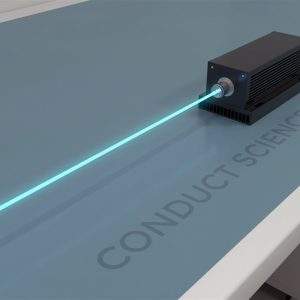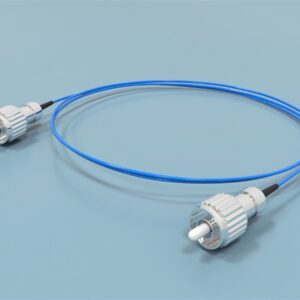$2,590.00 – $3,790.00Price range: $2,590.00 through $3,790.00
Yu Y et al. (2016) developed the cyborg maze to explore how rat cyborgs, enhanced with machine intelligence, could improve maze escape tasks.
In the experiment, rats were tasked with navigating from a consistent entrance to a fixed exit across fourteen distinct maze configurations.
Results from the study, which involved six rats and their intelligence-augmented cyborg counterparts, demonstrated superior maze escape performance by the rat cyborgs.
Discover Mazeengineers’ cyborg maze, adaptable for both mice and rats, with options for custom coloring and customization upon request.

MazeEngineers empowers preclinical neuroscience research with meticulously designed, customizable behavioral apparatuses. From manual classic mazes to fully automated smart systems, we provide the tools scientists need to capture high-quality, reproducible data for studies on learning, memory, anxiety, and depression.



Mouse |
Width: 10cm |
Length: 10cm |
Height: 10cm |
Rat |
Width: 15cm |
Length: 15cm |
Height: 15cm |

The Cyborg Maze serves as a tool for investigating the spatial navigation abilities of rodent cyborgs. These animals are equipped with electrodes implanted in their bilateral medial forebrain bundles (MFB) and somatosensory cortices (SI), along with a backpack micro-stimulator for brain stimulation during maze navigation. Computer-generated algorithms guide the cyborgs via Bluetooth stimulation, simulating obstacles and directions akin to whisker sensations (SI) and forward cues (MFB).
Constructed from acrylic, the Cyborg Maze spans 10 × 10 unit squares, each measuring 15 cm × 15 cm, with adjustable walls (15 cm height) allowing diverse configurations. Starting from the bottom-left cell, rodents navigate towards the top-right target cell, often incentivized with water rewards upon successful navigation. MFB stimulation can also serve as a reward, stimulating dopamine release. Olfactory cues can augment navigation.
The Cyborg Maze facilitates studies on cyborg intelligence, blending biological and machine intelligence. It supports comparative research on rodent navigation with and without machine aid, and studies on spatial cognition and learning in disease models. For exploring spatial cognition in rodents, the Robotic Cylindrical Maze is an alternative tool.
The acrylic Cyborg Maze features walls standing at 15 cm in height, completely enclosing its 10 × 10 unit squares, with each square measuring 15 cm × 15 cm. It includes a perspex top to prevent subjects from escaping, ensuring controlled experimentation. Positioned at the bottom-left is the starting cell, while the top-right hosts the target. A key flexibility is the ability to adjust walls in each cell, accommodating various experimental setups with customized routes from start to goal.
The maze enables integration of olfactory cues and rewards like water at the target, enhancing task engagement. Subjects are monitored via video, with performance data processed by computer algorithms to optimize navigation pathways.
Thoroughly clean the maze after every trial to eliminate olfactory cues from previous trials. Apply appropriate lighting to the maze. The Noldus EthoVision XT, a video-tracking system, can be used to track the subject’s movements and activity during the task.
Train the subjects (without them being rats cyborgs) on the navigation task to turn right in response to a right stimulus, turn left in response to a left stimulus, and move forward in response to a forward stimulus.
Training in the Cyborg Maze involves rodent cyborgs learning to navigate from a fixed starting point to a consistent target location. To expedite learning, dual rewards such as water and medial forebrain bundle (MFB) stimulation are utilized. Olfactory cues at the target enhance their odor-tracking abilities.
Before training, subjects undergo a 24-hour water deprivation period. Training commences by placing a cyborg in the starting cell, guiding it to the target cell. Upon reaching the target, the cyborg receives water and five consecutive MFB rewards before exiting the maze.
Each cyborg undergoes a single trial per maze configuration. After completing training on one layout, they progress to the next. Daily sessions encompass three to five random maze layouts over seven consecutive days.
Conduct trials in the same manner as training; however, allow the computer to aid them in their navigation. Conduct trials using fourteen maze configurations in which each rat solves the maze on each configuration only once before moving to the next configuration.
Investigation of Rat Cyborgs Maze Solving Abilities
In their study, Yu et al. (2016) explored the maze-solving capabilities of rat cyborgs using the Cyborg Maze. Six adult Sprague Dawley rats participated, initially undergoing training to respond to directional stimuli (left, right, forward). Subsequently, they trained in the Cyborg Maze to navigate from a consistent start to target position. Rewards included six mL of water and five consecutive MFB stimulations upon reaching the target, alongside an olfactory cue of peanut butter.
Training spanned seven days with each rat exposed to fourteen maze layouts. Following training, testing mirrored the procedure, with subjects tested both with and without computer-assisted backpack stimulator support, transforming them into rat cyborgs. Comparison revealed cyborg rats exhibited fewer steps, comparable to computer performance, and superior maze-solving efficiency compared to unassisted rats. They navigated more efficiently, revisiting fewer dead ends and completing tasks in less time.
The following parameters can be observed using the Cyborg Maze:
The Cyborg Maze serves as a platform for studying both cyborg intelligence and spatial navigation and learning in rodents. Its adaptable design, with removable walls, facilitates testing across various maze configurations to assess rodent navigation skills. Equipped with electrode implants, a rodent backpack stimulator, and computer software, the maze allows subjects to navigate autonomously without experimenter intervention. Alternatively, electric stimuli can be manually administered to the backpack stimulator, although this method necessitates trained personnel to manage rodent cyborg training effectively.
| Species | Mouse, Rat |
|---|
There are no questions yet. Be the first to ask a question about this product.